Over the last few years many people have become disgusted and disenchanted with the platform of Twitter. I agree that it can be an echo chamber for those who like to hear their own voice. However, I also know that it can be an effective Professional Learning tool. I have created an entire Professional Learning Network on Twitter because of the people that I chose to follow and I am diligent about blocking people who are spreading unworthy tweets. My Twitter account posts nothing personal. It is about my own professional learning. With Twitter colleagues challenge my thinking regularly. Questions that I have for my educational colleagues are answered immediately and without judgment. Global connections are made easily and then I use these connections to learn with my students.
Let me give you a few examples of how I’ve used Twitter in the classroom. One of my students brought in a rock with a fossil on it from his backyard. We took a photo and tweeted it out to find out if anyone could tell us what it was and the approximate age. Within an hour we heard back from a scientist at the ROM. He had an answer for us and was happy to help. In fact, he told us that corresponding on social media at the ROM as a scientist IS his job! One of the students brought in a mushroom from the woods near their house. We tweeted out to our PLN because they wanted to know whether or not it was edible. We were answered immediately and there were many links to other sites for information that sent us on a further journey into the wonderful world of fungi. Consequently, the advice from our Twitter contact was to never eat anything you find in the woods unless you are a scientist. In music, we were learning the words to a song by the Alternate Routes band and the students asked to tweet the band. They tweeted us back thanking us for the support and encouraging us to keep singing. We found some great classes across Canada to Skype with through Twitter and did mystery number finds with other grade 1 and 2 classes. You get out of Twitter what you are willing to put into it.
I have gotten more out of 15 minute Twitter education chats than I have out of some day long workshops. The educators on Twitter chats are there by choice and they are passionate about education. The questions are specific and the answers are in 140 characters. The best part is, you don’t even have to comment if you don’t feel comfortable. You can just sit back and learn. I have also met these Tweeters in person at IT conferences and taken their workshops. Knowing the presenters ahead of time and having a connection is like going to a concert when you already know the newest album really well; it makes the experience richer and deeper.
Here are a few EDUTweeters that I suggest you follow to get started:
@dougpete @peterskillen @brendasherry @avivalova @mraspinall @sylviaduckworth @Toadmummy (that’s me)
Here are a few #hashtags to follow
#EdchatON #edtechchat #teacheredchat #bfc530
Twitter may not be your thing, but don’t knock it until you’ve tried it as your #PLN. I guarantee you will find some ideas for #deeperlearning or #inquiryed.


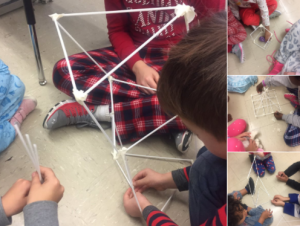
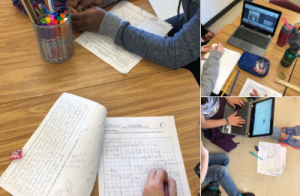

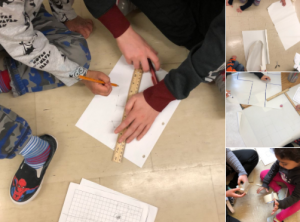
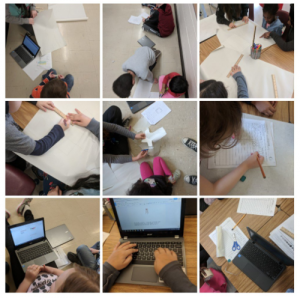 Next week we are on to our build and learning about hand tool safety in kindergarten. It’s sure to be a new adventure and I can’t wait to see and share the actual solutions that they create.
Next week we are on to our build and learning about hand tool safety in kindergarten. It’s sure to be a new adventure and I can’t wait to see and share the actual solutions that they create.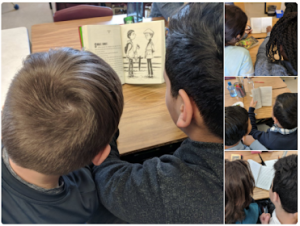
 On Day 1, many groups decided to start off with reading and to jump into making predictions through the use of Padlet. They discussed and made inferences based on the blurb, images from the text and what they read in the first few pages and determined what they thought the text would be about and from whose perspective the text may be written. Today, some groups decided to search for a quote that had a deeper meaning that could be applied to our lives while others took some time to visualize the setting and drew a scene. It’s inspiring not only to see students helping each other out with pronouncing and/or making meaning from new or unfamiliar words but there is also a true sense of collaboration as they work understand the text and in the completion of tasks. They may not necessarily be in groups with their friends but they are making new friendships as they work together and learn from and about each other.
On Day 1, many groups decided to start off with reading and to jump into making predictions through the use of Padlet. They discussed and made inferences based on the blurb, images from the text and what they read in the first few pages and determined what they thought the text would be about and from whose perspective the text may be written. Today, some groups decided to search for a quote that had a deeper meaning that could be applied to our lives while others took some time to visualize the setting and drew a scene. It’s inspiring not only to see students helping each other out with pronouncing and/or making meaning from new or unfamiliar words but there is also a true sense of collaboration as they work understand the text and in the completion of tasks. They may not necessarily be in groups with their friends but they are making new friendships as they work together and learn from and about each other.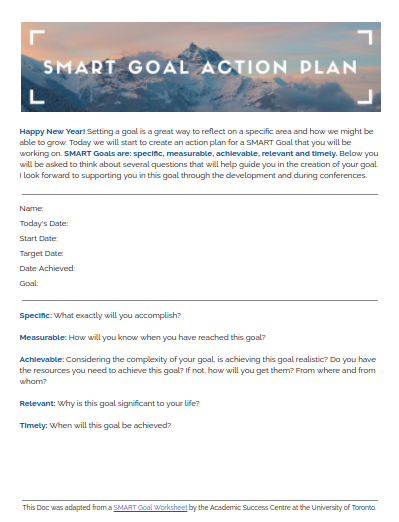


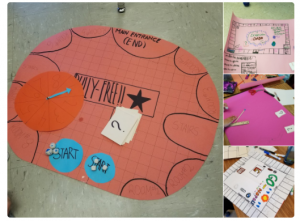
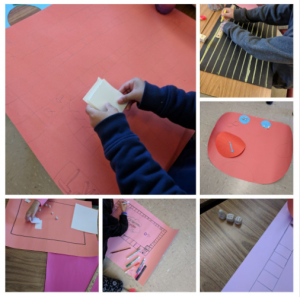 As I mentioned before, we are well into the creation stage and will continue in the new year. I do wonder however, if by calling it a board game, if I have steered them into a specific direction. Could it have been just a game where I may have seen a greater diversity of materials being used from physical to online? Did I in reality just do the very thing that bothered me so much about my mother’s course? Ask students to create something that wasn’t bored and yet steered them all into asking for bristol board? I’m on a path to really reflect on the types of tasks that I design for students while expecting them to become critical thinkers who are creative. This has now become food for thought for future tasks that we’ll embark on. Please stay tuned!
As I mentioned before, we are well into the creation stage and will continue in the new year. I do wonder however, if by calling it a board game, if I have steered them into a specific direction. Could it have been just a game where I may have seen a greater diversity of materials being used from physical to online? Did I in reality just do the very thing that bothered me so much about my mother’s course? Ask students to create something that wasn’t bored and yet steered them all into asking for bristol board? I’m on a path to really reflect on the types of tasks that I design for students while expecting them to become critical thinkers who are creative. This has now become food for thought for future tasks that we’ll embark on. Please stay tuned!
 Much thanks to the “Terrific ETFO Trio” – Ruth Dawson, Joanne Myers, and Jane Bennett. Not only was it inspiring to watch these 3 women share strategies – with intentionality – but I also felt as though they gave to us on every level. From remembering our names to making sure there were yummy treats, they hosted us so well and reminded me of the importance of making my audience feel as though they matter every time that I present. I walked away wishing that I had more time to sit down and learn from them. Thank you!
Much thanks to the “Terrific ETFO Trio” – Ruth Dawson, Joanne Myers, and Jane Bennett. Not only was it inspiring to watch these 3 women share strategies – with intentionality – but I also felt as though they gave to us on every level. From remembering our names to making sure there were yummy treats, they hosted us so well and reminded me of the importance of making my audience feel as though they matter every time that I present. I walked away wishing that I had more time to sit down and learn from them. Thank you!